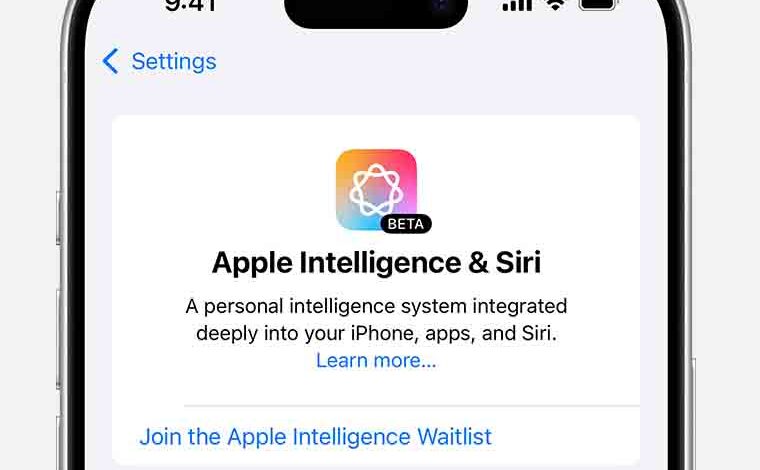
Apple Intelligence is Apple’s entrance into generative AI and large language models (LLMs), offering intriguing features but a limited availability and slow rollout pace appear to be a disappointment to existing and new iPhone owners.
At WWDC24, Apple introduces this new AI suit for iPhones, iPads, and Mac devices. Compared to iPhones, iPad and Mac devices can run Apple Intelligence in up to four-year-old models.
Meanwhile, only the iPhone 15 Pro and 15 Pro Max can run Apple Intelligence. That’s it, other devices including the standard iPhone 15 or the Plus are also ineligible.
The iPhone maker gave a brief reason behind for leftover. Devices other than 15 Pros cannot run new LLMs due to insufficient computational power.
Computational power refers to the ability to process information (datasets and complex requests) in real time. This segment relies on the device’s chipset. It means, previous iPhones might run Apple Intelligence but are likely to perform slower than eligible devices.
These explanations for computational requirements make sense but are not “completely” true for previous iPhones.

Apple Intelligence (Source – Apple)
M1 vs A14 Bionic – Both are the same but only one is compatible
M1 chipset from 2020 is compatible with Apple Intelligence. It is the first Apple silicon and marked the transition from the Intel chipset. The chip has a 16-core NPU architecture capable of completing 11 trillion operations per second.
A14 Bionic, released with iPhone 12 models also has a 16-core Neural engine and completes 11 trillion operations per second but it’s incompatible with Apple’s AI.
Neural engine is responsible for AI and trillion operations are the backbone of on-device AI. These are the core concepts of Apple Intelligence. Besides, it is also using server-side compute to support powerful features.
Looking at successors, the iPhone 13 series launched in 2021 has A15 Bionic with a 16-core Neural engine. It can process 15.8 trillion operations per second. In the following year, A16 brought the same architecture with 17 trillion operations per second.
The latest A17 Pro chipset used in iPhone 15 Pro and Pro Max brings 16-core architecture with 35 trillion operations per second. That’s twice the speed of the A16.
While the A17 Pro has a much faster Neural engine, the A14 is still comparable to M1 in architecture and computational power. It makes the processor eligible for Apple Intelligence.
RAM – A key factor?
Some might argue that the ineligibility lies in onboard RAM, which is 8GB in iPhone 15 Pro models. On the other hand, iPhone 15 and old models have only 6GB RAM.
Apple’s RAM angle has caused much discussion in the smartphone industry. The company doesn’t reveal actual RAM capacity, which is highly questionable.
Interestingly, this low-RAM practice remained in action until last year, while Samsung has been using at least 12GB and more RAM in its flagship devices since 2020.
If we look at this aspect, this fault is still under Apple’s account because consumers have entrusted the brand with thousands of dollars per device. Therefore, these specs should have been compatible enough to support future major upgrades.
Apple Should Try
Over the past years, millions of consumers purchased iPhones but only two received Apple Intelligence.
If we look at this compatibility angle, even though some of the newest features might not completely run on old devices, Apple might have ported a few AI capabilities.
For example, the company could’ve opted for on-device computational capability in these existing iPhones if it didn’t want to go full-fledged with server-side computing. However, there isn’t the slightest effort made in this direction.
Moreover, the A16 bionic chipset used in the iPhone 15 and 15 Plus has left its user base behind in the AI race while launching alongside the iPhone 15 Pros. Now, these iPhones are ineligible in Apple’s generative AI dictionary.
New Devices – Empty Promotion
The story doesn’t end here, iPhone 16 series users are also part of this AI promotion. During the September 9 launch event, top Apple executives promoted all Apple Intelligence features for this lineup.
In reality, Apple Intelligence doesn’t ship with these iPhones out of the box. Instead, Apple is sending these in batches with an incremental over-the-air software update rollout.
iPhone 16 owners have only received the first batch of Apple Intelligence with iOS 18.1 and waiting for the iOS 18.2 release in December with additional generative AI image features.
Still, an advanced Siri voice assistant is missing in action and not expected to rollout until next year.
Apple Intelligence Disappointment
Generative AI and LLMs can greatly improve smartphone user experience and limiting previous devices from Apple Intelligence capabilities is a big disappointment for consumers.
The post Apple Intelligence: A Disappointment for Old iPhone Owners appeared first on Sammy Fans.





